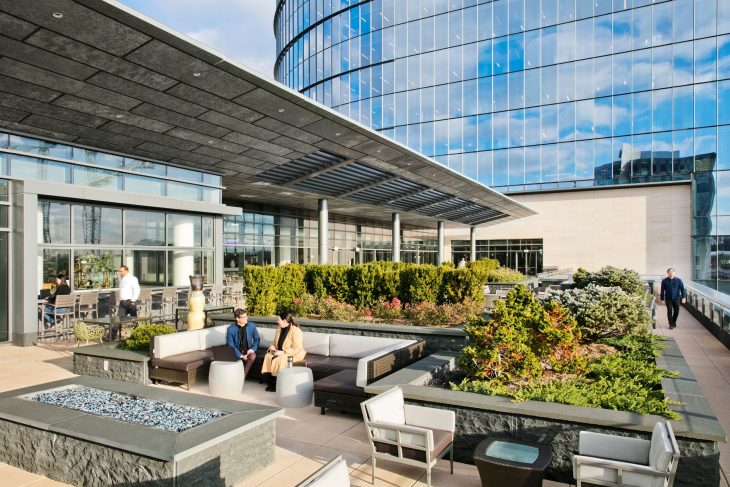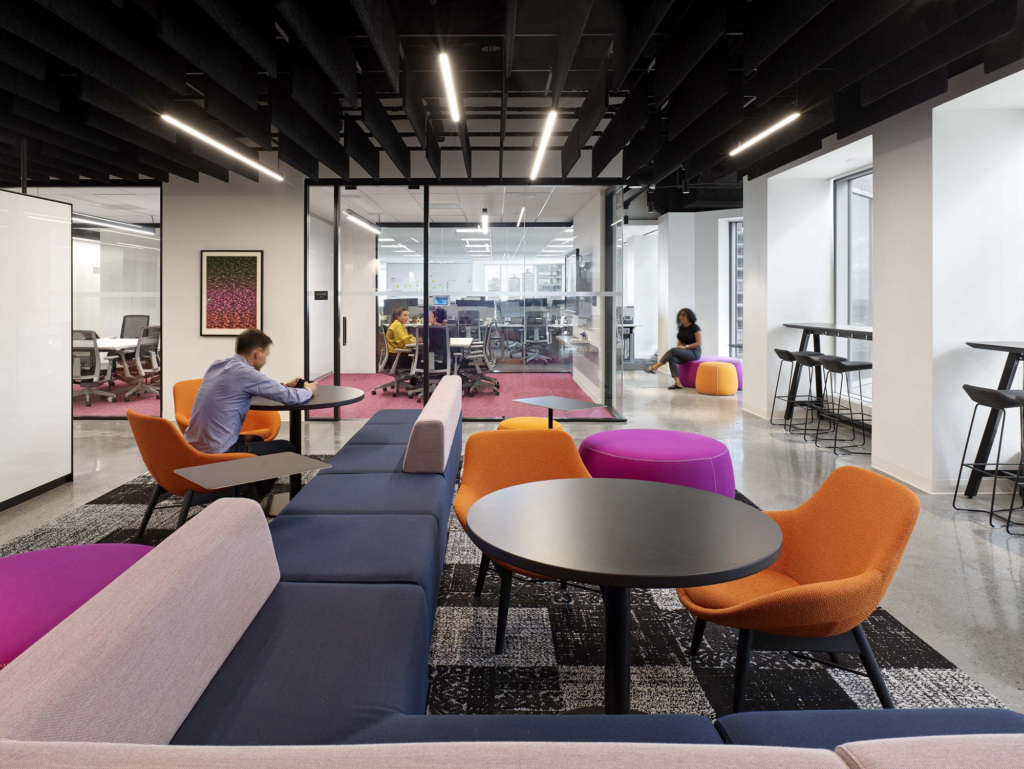Capital One’s Work Environment Survey sheds more light on the employee experience and why workplace design is important.
The third iteration of Capital One’s Work Environment Survey released earlier this year builds on the information gathered in the two previous surveys. We reached out to Stefanie Spurlin, Capital One’s VP of Workplace Solutions, who is responsible for managing workplace initiatives across Capital One’s myriad facilities.

WDM: In deciding questions for the survey, are there key issues that you want to address based on what may be in the planning stage for new facilities?
Capital One: Capital One is a data-driven company and our approach to workplace design is no exception. The Work Environment Survey is a fantastic source of data on trends and it helps us validate whether the strategies we are pursuing as a company are in line with what external professionals – and potential associates – want and expect in a workplace. We draft the survey with a few inputs in mind, including trends that our team is observing from our industry knowledge and concepts we are looking to test out or validate for our own workplace design strategy.

Thinking back over time, what kind of spaces are you providing now that would not have been considered several years ago? What kind of spaces do you anticipate employees may want in the future, to further enhance their well-being at work?
The 2019 Work Environment Survey results showed huge growth in the desire for spaces in the workplace to take breaks throughout the day – nearly all (89 percent) respondents agree they’re able to do their jobs better when those are available. When we asked employees which design elements, they most want to see in their workplaces, 50 percent said spaces for rest and relaxation, compared to just 25 percent who said that in 2018. In addition, 42 percent listed spaces to unplug as a mental health resource that would improve their satisfaction at work.
Those stats really stood out to us this year. It’s hard to ignore how important these specific spaces are to employees – it even impacts their perceived ability to do their jobs. Capital One offers Mindfulness Rooms as part of our design strategy and we anticipate we’ll continue to see a focus on hospitality experiences, like spaces designated for breaks, in the industry as a whole.

How do you evaluate when something does not seem to be working? What kind of analysis do you do to make a fix or change direction?
Listening to associate feedback is an important element of our always-evolving workplace design strategy. The Work Environment Survey is a great tool for understanding external trends and preferences but it’s also crucial for us to understand how our own associates are feeling about and utilizing the spaces and solutions we provide.
If we notice an uptick in conversation or feedback around a topic, we always try to dig a level deeper to understand what is really driving the feedback. It could be that we need to communicate more to help associates understand how to use that particular space or program to make their lives easier, in which case we can quickly provide additional information on company channels to help bring our colleagues along on the journey. On the other hand, sometimes the space or service in question may not meet the needs to enable or simplify the way associates are working right now, in which case we learn from that and adapt for future iterations of our design strategy.

A highlight of the survey was the emphasis on the health and well-being factors that are now being taken into consideration when planning and executing new work space – What kind of expertise do you seek to bring those aspects into your designs to ensure these aspects of the design are thoroughly investigated? (i.e. consultants, goal of certifications (LEED, WELL, Fitwell)?
Associate well-being is a critical element of our overall workplace design strategy. We prioritize health and wellness amenities, like fitness centers and healthier food and beverage options, because we want our associates to feel equipped from a holistic perspective to do their best work for our customers.
Laddering back to our overall sustainability goals, we have made a commitment to pursue at least LEED Silver certification for all new office construction and comprehensive renovation projects. Our new headquarters tower in Tysons is LEED Gold certified. We regularly work with different partners to help bring expertise to the table throughout our iterative design and implementation processes.


